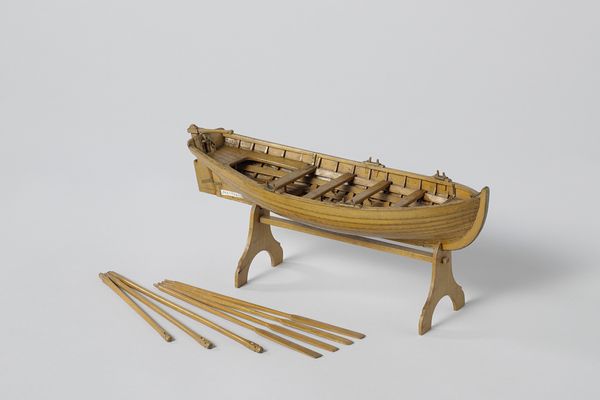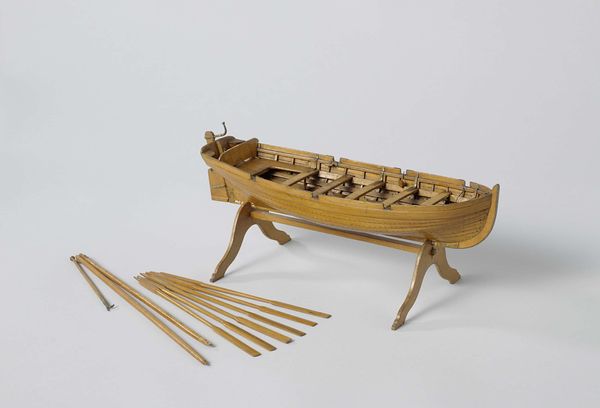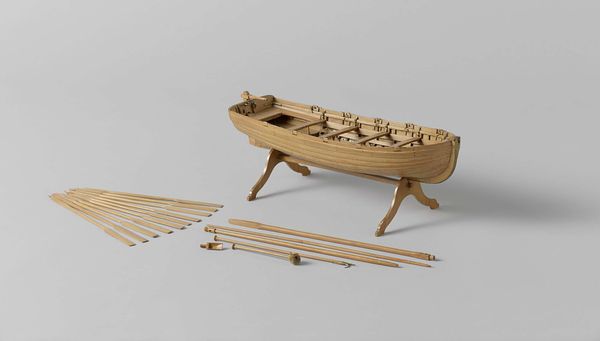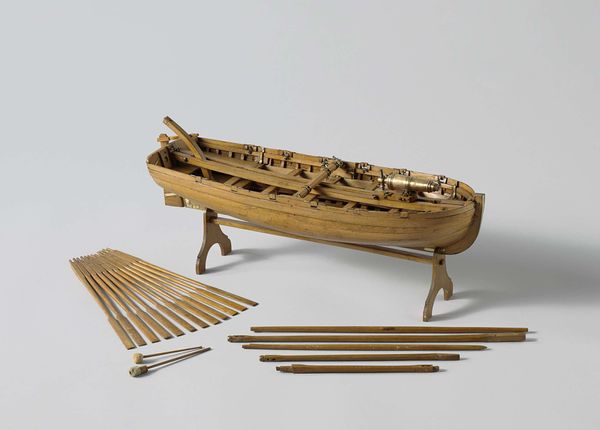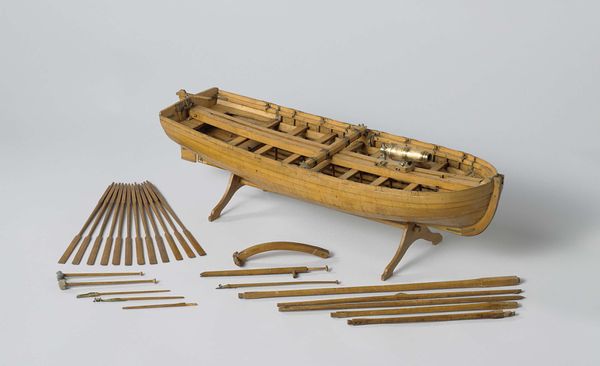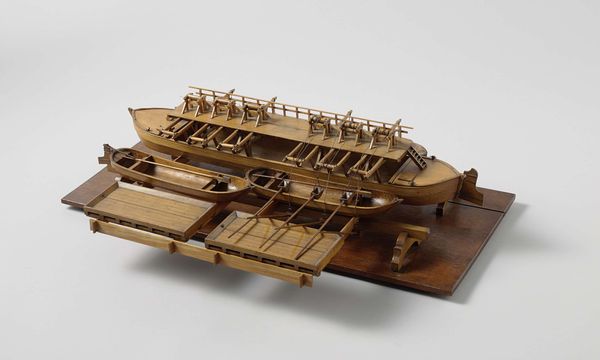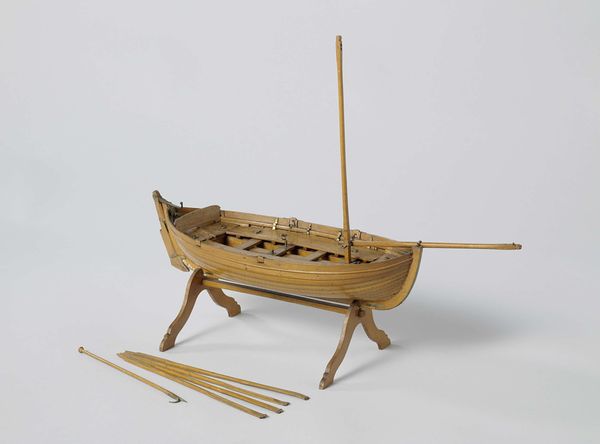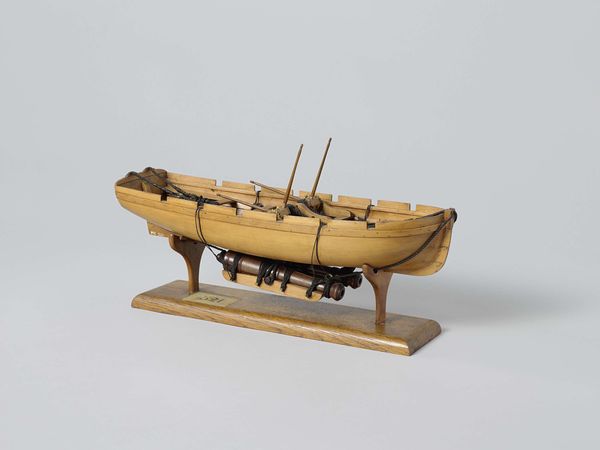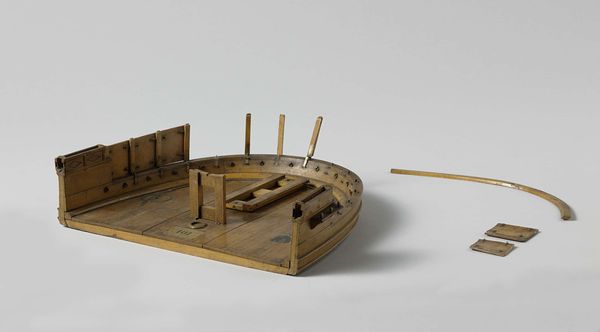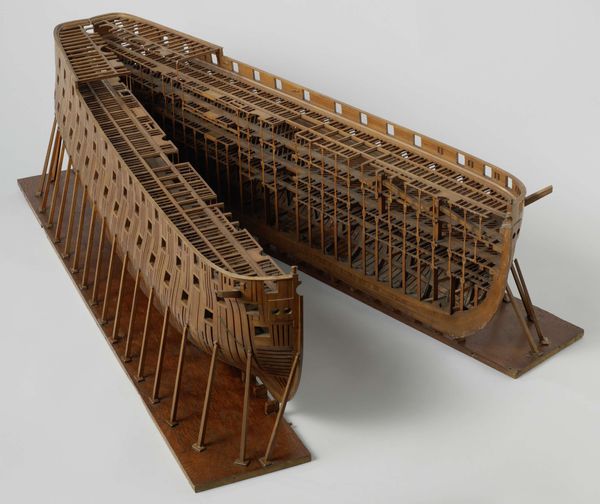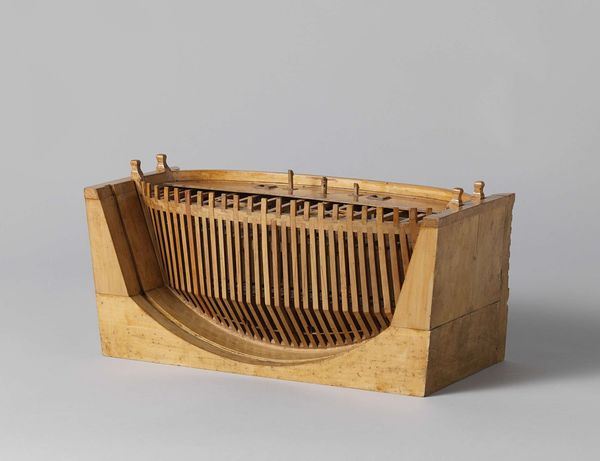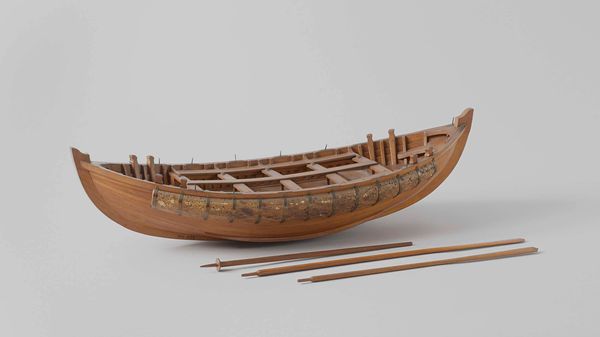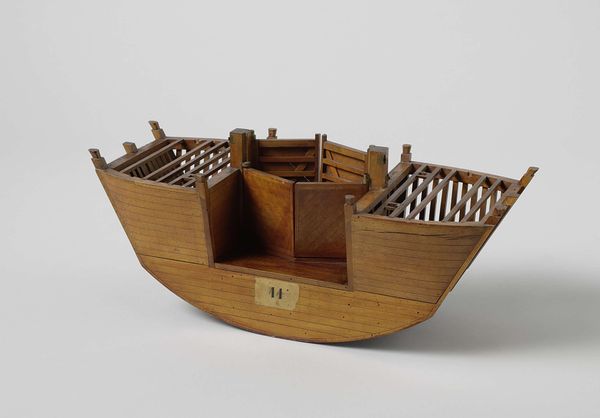
sculpture, wood
#
neoclassicism
#
sculpture
#
wood
Dimensions: height 7.6 cm, length 20.2 cm, width 6.3 cm
Copyright: Rijks Museum: Open Domain
Editor: This is a model of a jolly boat, crafted around 1819 by Rijkswerf Rotterdam. It’s a wooden sculpture, and it’s striking how much detail they packed into it. What stands out to you? Curator: For me, this piece highlights the crucial relationship between artistry and industry. Consider the Rijkswerf Rotterdam. They weren't just building boats; they were shaping the very infrastructure of the Netherlands. The materiality speaks volumes, right? Editor: It does. The wood is beautifully worked. What were jolly boats actually *used* for? Curator: Jolly boats served as essential support vessels, shuttling between larger ships and shore. Their construction involved a diverse workforce and a spectrum of skill sets. We're not just seeing a model boat, but the intersection of labor, maritime power, and colonial ambitions. Editor: Colonial ambitions? How does that connect to a boat model? Curator: Think about it. These boats enabled trade routes, facilitated military operations, and moved resources. It reflects a very specific application of both craft and design within that political and economic system. Is it just a ship? Or a vessel *of* something more? Editor: So it’s a showcase of the shipyard’s skills, but also a symbol of broader Dutch power at the time? Curator: Exactly! This jolly boat connects the micro – the skilled hand carving the wood – with the macro: global trade, naval power, resource extraction, all supported by that little boat! Editor: I never would have considered all of those layers when just looking at the miniature craftsmanship, but that reframes the entire piece. Curator: That is what makes approaching art with a focus on labor and materiality worthwhile. We discover the intertwined threads of economy, artistry, and society in even the smallest objects.
Comments
No comments
Be the first to comment and join the conversation on the ultimate creative platform.
